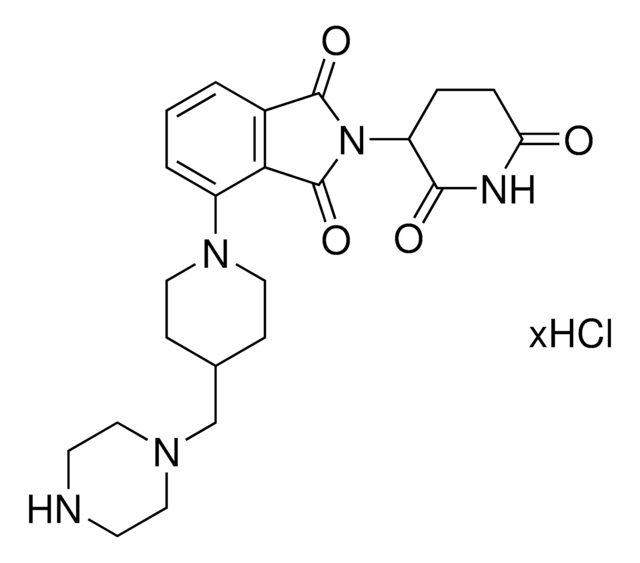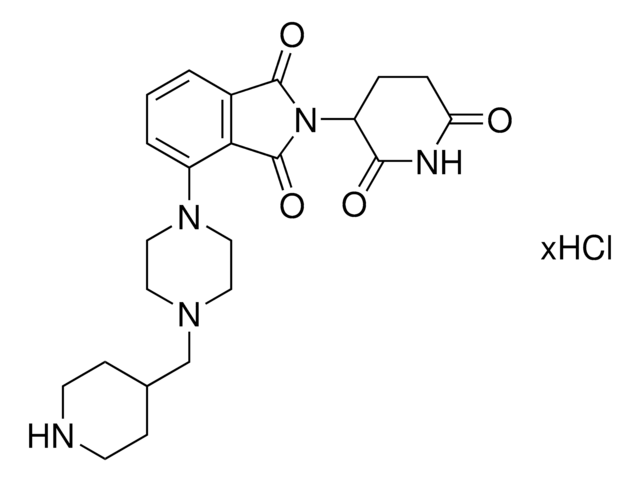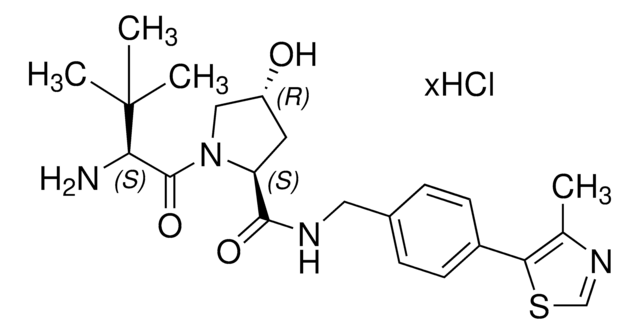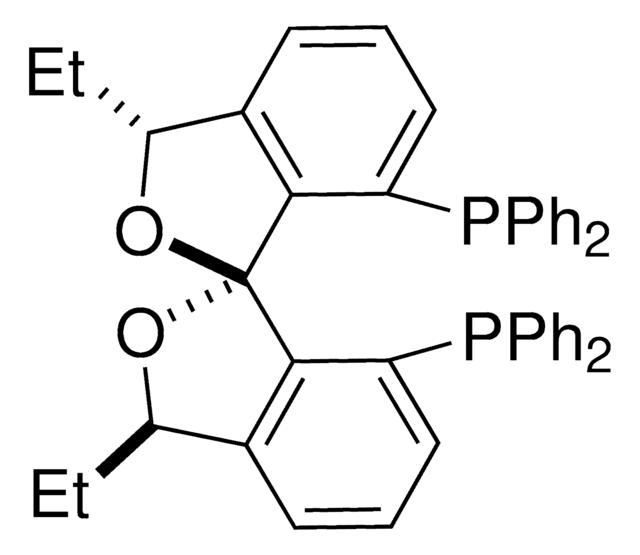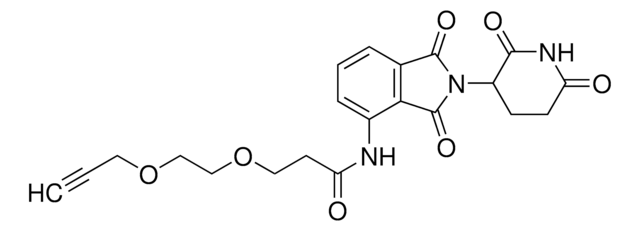Wichtige Dokumente
905224
Pomalidomide-PEG6-butyl amine hydrochloride
≥95%
Synonym(e):
24-Amino-N-(2-(2,6-dioxopiperidin-3-yl)-1,3-dioxoisoindolin, Crosslinker–E3 Ligase ligand conjugate, Pomalidomide-2-2-2-2-2-2-6-NH2 HCl salt, Protein degrader building block for PROTAC® research, Template for synthesis of targeted protein degrader
About This Item
Empfohlene Produkte
ligand
pomalidomide
Assay
≥95%
Form
powder or crystals
Eignung der Reaktion
reactivity: carboxyl reactive
reagent type: ligand-linker conjugate
Funktionelle Gruppe
amine
Lagertemp.
2-8°C
SMILES String
O=C(C(CC1)N(C2=O)C(C3=C2C=CC=C3NC(COCCOCCOCCOCCOCCOCCCCCCN)=O)=O)NC1=O.Cl
Anwendung
Sonstige Hinweise
Portal: Building PROTAC® Degraders for Targeted Protein Degradation
Targeted Protein Degradation by Small Molecules
Small-Molecule PROTACS: New Approaches to Protein Degradation
Targeted Protein Degradation: from Chemical Biology to Drug Discovery
Impact of linker length on the activity of PROTACs
Rechtliche Hinweise
Ähnliches Produkt
Lagerklassenschlüssel
11 - Combustible Solids
WGK
WGK 3
Flammpunkt (°F)
Not applicable
Flammpunkt (°C)
Not applicable
Hier finden Sie alle aktuellen Versionen:
Analysenzertifikate (COA)
Leider sind derzeit keine COAs für dieses Produkt online verfügbar.
Wenn Sie Hilfe benötigen, wenden Sie sich bitte an Kundensupport
Besitzen Sie dieses Produkt bereits?
In der Dokumentenbibliothek finden Sie die Dokumentation zu den Produkten, die Sie kürzlich erworben haben.
Kunden haben sich ebenfalls angesehen
Artikel
Partial PROTACs are a collection of crosslinker-E3 ligand conjugates with a pendant functional group for covalent linkage to a target ligand.
Partial PROTACs are a collection of crosslinker-E3 ligand conjugates with a pendant functional group for covalent linkage to a target ligand.
Unser Team von Wissenschaftlern verfügt über Erfahrung in allen Forschungsbereichen einschließlich Life Science, Materialwissenschaften, chemischer Synthese, Chromatographie, Analytik und vielen mehr..
Setzen Sie sich mit dem technischen Dienst in Verbindung.